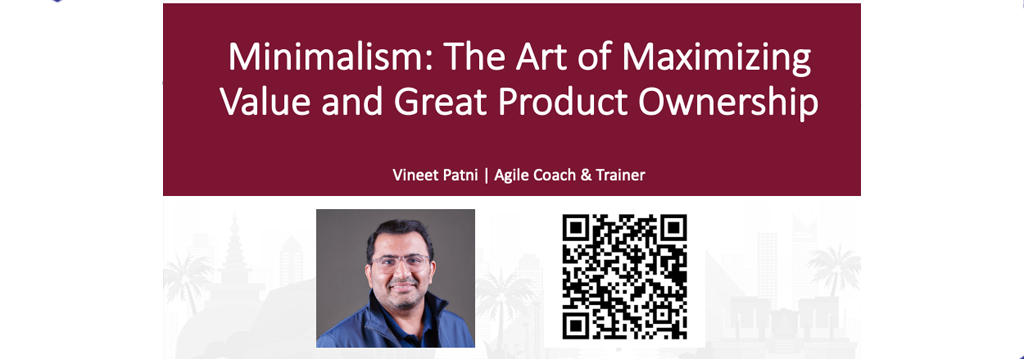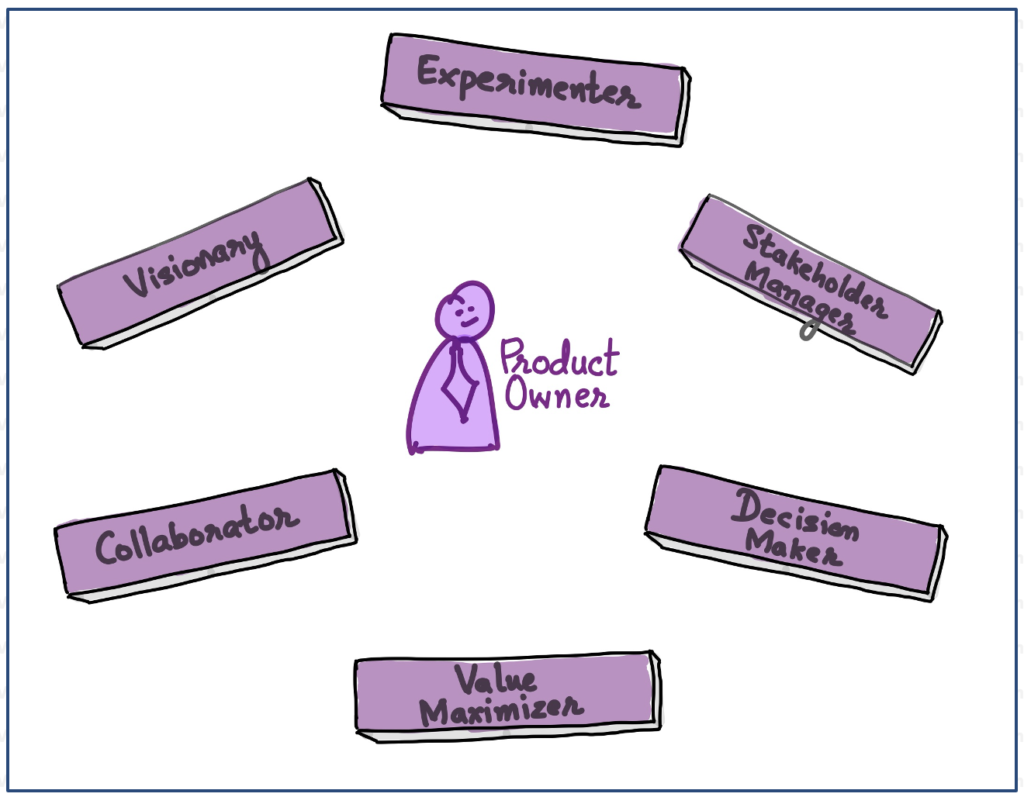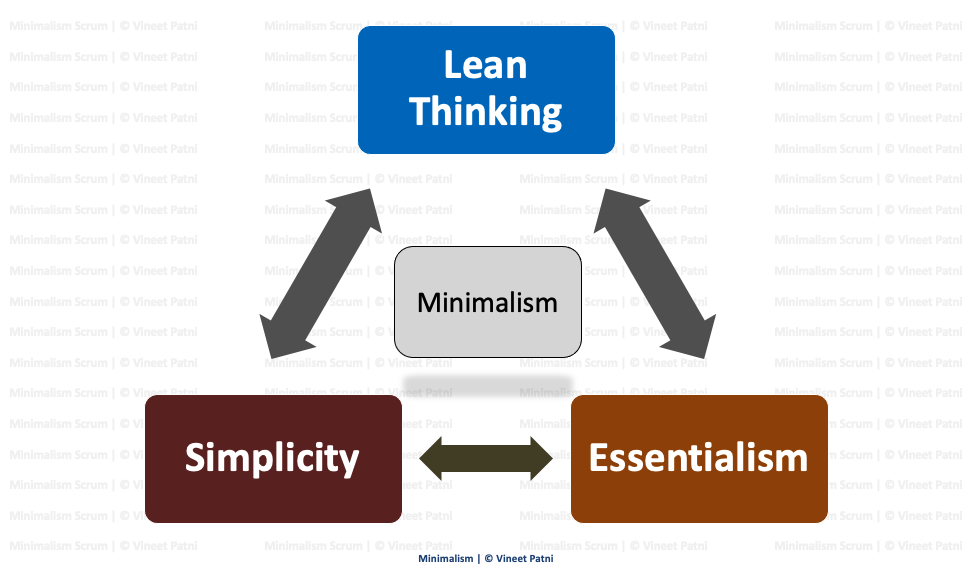
Category : Product OwnerScrum
By Vineet Patni | 4 November 2022
Product Owners (or business leaders) often feel overwhelmed and overloaded to draw out the most from the potential market. Despite the best efforts, there are sometimes situations when some products get discarded by the users. This rejection should not be considered a complete failure in the current complex world with many uncertainties and ambiguities. Instead, it is essential to change the approach toward Product Ownership by inculcating a Minimalist approach!
Responsibilities of a Product Owner

In Scrum, a successful Product Owner focuses on critical responsibilities as a true visionary with a specific vision and goals! They focus on small, regular experimentation. They work collaboratively with the Team members and stakeholders and enhance the value chain. They are decision-makers and ensure stakeholder management! None of these responsibilities change when we apply a Minimalist approach to Product Ownership. Understanding how one can effectively maximize product value with the help of Minimalism is essential in today’s times.
What Minimalism means?
You might wonder what Minimalism is, and it has yet to have a universally accepted definition as it is still under academic research. In simple terms, Minimalism entails simplifying processes and steps to attain Agility in the current dynamic product market, unlike the conventional methods of overcomplicating things to accomplish intended outcomes. Minimalism is where the art of effective Product Ownership lies.
How COVID-19 enabled Minimalism in People
Minimalism has been around for centuries; however, it has become much more relevant in recent months as many individuals look for ways to simplify their lives amidst the chaos and uncertainty caused by COVID-19. COVID-19 has impacted the daily routine of almost every individual, business, and process, including the introduction of virtual working, online education, faster digitalization, etc. By focusing on essential items and experiences, people are finding that they can be mentally and financially better off by living with less.
People became more conscious about their spending habits and chose to invest in quality items that would last longer instead of buying multiple cheap items that didn’t add value. This lifestyle also encourages people to identify what they truly need versus what they merely want or can afford.
Many people who have adopted a minimalist lifestyle during this pandemic report improved mental health, increased financial stability, better quality relationships, and an overall heightened sense of joy.
These positive impacts became achievable because people became minimalists. There were fewer commuting expenses; people started living with just meeting their necessities and decreased socializing activities. Hence, Minimalism teaches us how to achieve more through simplicity practically.
Core of Minimalism
In the context of Product Ownership, we define Minimalism as the culmination of three related concepts from the Manifesto for Agile Software Development and the Scrum Guide: Lean Thinking, Simplicity, and Essentialism.

~ Simplicity
Simplicity is when things are free from complexity, excess, or ambiguity. A business leader or Product Owner must try to achieve clarity by removing complicated and unnecessary work, i.e., maximizing the job not to be done.
~ Lean Thinking
Lean Thinking is when we organize human activities to derive more benefits to society by excluding excessive waste. In Scrum, the Product Owner removes the added clutter, extra processes, and activities.
~ Essentialism
Essentialism is focusing on only the right things and removing any unnecessary something that distracts from the true purpose.
Today’s technological advancement gives us a true example of Minimalism. Products are becoming more straightforward to use. For instance, old television remotes had many buttons, whereas the number of controls has reduced these days, reflecting Minimalism. Therefore, the connection between the three terms is the foundation of Great Product Ownership.
Successful Stories of Minimalist Leaders
Before diving into how Product Owners can be minimalists to achieve product success, let’s derive inspiration from a few internationally reputed and successful business owners.
~ Warren Buffet
Warren Buffet is known for once being the wealthiest person on earth. He achieved this success by following the different components of Minimalism. His strategy included leading a simplistic lifestyle, excluding excess luxuries from his life, and being a lean thinker while making investment decisions. Every time he used to divide the total investment options into two stacks of the file, where one side had a ratio of 85 files, while the other side only had 5 to 10 files. Following the concept of essentialism, Warren Buffet ignored the 85 and invested in only 5-10 businesses that made more sense to him.
~ Jeff Sutherland and Ken Schwaber
Jeff Sutherland and Ken Schwaber are the famous creators of the Scrum Guide and actively followed Minimalism’s approach. The Scrum Guide has reduced in size and ambiguity with every new edition without compromising the intent and messaging.
~ Azim Premji
Shri Azim Premji, the ex-Chairman of Wipro, is an inspiring figure for entrepreneurs and business leaders worldwide. His success story as an influential leader in the global market exemplifies a minimalist approach to achieving success. Premji has always believed in keeping things simple while focusing on sustained growth and profitability.
How can Product Owners be Minimalists to Create Successful Products?
The key for Product Owners to create successful products while following the Minimalism approach in Scrum includes a few essentials described below:
~ Clarity of purpose (“Why”)
The Product Owner should clearly understand why we are building a product. An inspirational book titled “Start with Why” by Simon Sinek also states that clarity is the motivating force, centering on purpose. Therefore, Product Owners must address the ‘Why’ question to understand the Product’s market need and value for ensuring success.
~ Single Product Goal
In Scrum, business success is defined based on the goal-setting and attainment strategy of the management. It is essential to move one step at a time; therefore, focusing on a single goal makes it easy to accomplish as a Minimalist.
~ Shorter Product Backlog
It is imperative to trim down the Product Backlog short. Otherwise, it adversely affects the process of product value maximization and slows down the progress of the business. It is a common practice to add more to the Product Backlog during Product Backlog Refinement. Instead, Product Owners must focus on reducing the number of backlogs to ensure the success of the products. After all, it’s about something other than keeping the team busy by building more stuff into the Product.
~ Prioritize things we value
We must prioritize the things we value the most and remove the clutter of all those things on the way that distract us from attaining our goal. Setting priorities also help us in stepwise achieving goals that are most crucial for the business.
~ Solve the correct problems, one at a time
It has been a usual approach that we start our day with a to-do list and follow it. To become a Minimalist, one must change the course to what to work on and what problem to solve today. It is also essential to prioritize the issues and solve only the most impacting problems, one at a time.
~ Eliminate all emotional burden
Don’t be emotional if something does not work. It is necessary to understand that only some ideas always work, and one must remember the sunk cost. Product building always requires small quick experiments; one must validate assumptions without being emotional and move on.
~ Reinforcing your “Why”
Every Product Vision and Goal must be more transparent, precise, and reinforced repeatedly. The Product Owners need to realign and revive the vision and goals with purpose and passion, along with empirical data.
~ Learn and Practice Saying “No”
We can draw some “courage” from the Scrum Values, stating that you must know when to say “no.” There will always be situations where stakeholders might apply pressure to get things done urgently. As the Product Owner, if you are still wondering if it is valuable enough to consider building, or you are uncertain about the feasibility, then it is better to say “no” instead of failing to meet the deadline of “completing everything by yesterday.” Instead of telling a straight “no,” an alternate approach can be saying, “Not Yet!” and buying some time to think, experiment, and make decisions about whether to or not.
The Journey Continues
In today’s time, Product Development and value maximization is an ongoing journey, and there is nothing like “The Final Product.” The market needs are constantly changing, and we need to keep innovating and further enhancing the value the Product delivers to end users. After successfully attaining one goal, we craft the next goal and move on. The most important thing is that Minimalism keeps the approach simple, intelligent, and lucid and does not let the challenges affect the decisions, hence achieving the tangible takeaways of Minimalism.
Pitfalls of Minimalism
After thoroughly going through the benefits of Minimalism, it is equally necessary to know that everything has its pros and cons. If one tries to be too minimalist, there are a few pitfalls, including that it may turn out less beneficial, and you might lose potential opportunities. Avoiding risk also reduces the chances of profitability. Nevertheless, Minimalism derives a more significant benefit as a Product Owner will still be safer from facing higher losses. On the contrary, the conventional approach has higher risk and slows down the process of product value enhancement.
End Thoughts
Overall, the Minimalist approach benefits many businesses to earn good and succeed more thoughtfully. Many scrum leaders and product owners will be relieved from the over-commitment and excess workload, and they can attain better product development and value maximization success by adopting Minimalism. Each of the three aspects is important in applying the approach to derive the expected outcome in making the Product building a win for the Product Owner.
About The Author:
Vineet Patni is the Founder and Principal Agile Coach at ScaleUp. An avid learner and a passionate facilitator, Vineet has been assisting enterprises and individuals in becoming truly Agile. Please feel free to connect with him at Vineet@ScaleUpConsultants.com .
Disclaimer: The opinions expressed in this post are the author’s own. The author welcomes and respects any difference of opinion.


Leave a Reply